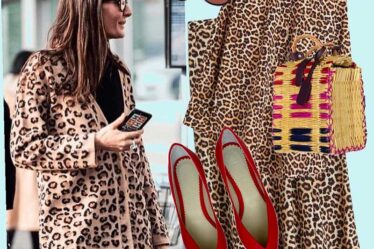

Warby Parker’s stores are proving to be its saving grace.
In 2022, the eyewear maker slashed marketing spend, but thanks to its store expansion — the company opened 40 new stores in 2022 and plans to open 40 more in 2023 — it ushered in new customers. In the final quarter of the year, Warby Parker posted better-than-expected sales growth and narrowed its losses by more than $20 million.
Warby Parker isn’t alone. While some digitally native retailers are divesting from traditional retail — The RealReal said in February it will close at least four stores this year to improve its bottom line — there are many more brands investing in physical stores to drive customer growth as online advertising remains expensive and crowded. Glossier opened a new flagship store in New York City in February, along with a debut into Sephora stores across the US and Canada. Everlane secured $90 million in financing in September, in part to open new stores.
After a dip during the pandemic, consumers have flocked back to in-person shopping. Physical stores accounted for more than 70 percent of clothing and accessories sales in the US in 2022, according to the Census Bureau. But not all digital brands have mastered their brick-and-mortar strategies just yet.
Footwear brand Allbirds, known for its wool runners, also prioritised a retail expansion last year, opening 19 new stores in the US in 2022 to end the year with 42 total locations in the US. It also entered multi-brand retailers like Nordstrom and REI to increase brand awareness outside of social media ads. But in the final quarter of 2022, its sales decreased 13 percent, due to weaker demand, and its losses in the quarter widened to $25 million, from $10 million in the previous year. The company said on Thursday that it will slow the pace of store openings in 2023, and it will selectively expand its retail partnerships as it chases profitable growth in the coming years. (Allbirds expects it will generate cash flow and adjusted EBITDA profits by 2025).
Making brick-and-mortar work depends on whether a brand’s products and store experiences are compelling and differentiated enough from its online experience, analysts say. Warby Parker and Allbirds, which both went public in 2021 and saw their stocks fall by as much as 70 percent last year, provide disparate case studies for how to navigate physical retail.
Choosing the Right Channel
For Warby Parker, growing its store fleet was a return to form. Warby Parker, which opened its first store in 2013, saw its stores account for more than 60 percent of its annual sales by 2019. That shifted briefly during the pandemic, but in 2022, brick-and-mortar was dominant again, accounting for around 60 percent of revenue that year.
But aggressive retail expansion can also weigh on a company’s bottom line. Brands like Abercrombie & Fitch and J.Crew lost money in the 2010s as they opened more stores and consumers felt less excited about their product offerings.
Warby Parker is confident it won’t meet the same fate. The company commissioned outside analysis that concluded the brand could open as many as 900 stores.
There’s “no evidence to show that our retail rollout is going to degrade profitability versus expand profitability,” Neil Blumenthal, co-founder and co-CEO of Warby Parker, told BoF.
The brand’s owned stores will remain the defining non-digital driver of growth and profits as Warby Parker shies away from partnering with multi-brand retailers.
“So much of our value is the customer experience that we can’t replicate through additional retailers,” Blumenthal said. “Having a trained expert guide you through that process … we’re the best at creating that experience.”
For Allbirds, wholesale is an important part of its long-term growth strategy and path to profitability, since multi-brand retail is an environment most customers prefer to buy shoes in, analysts say.
“The idea is to increase brand awareness, accelerate customer acquisition, and build credibility in newer performance categories,” said Mark Altschwager, senior research analyst at investment bank and financial services company Robert W. Baird & Co., in an email. “If executed well, this should aid Allbirds on its quest to reach profitability.”
But so far it’s been a slow burn. Sales from Allbirds’ retail partners accounted for less than 10 percent of the company’s revenue in the fourth quarter of 2022.
Analysts said Allbirds’s late entrance has given its competitors an advantage. (It inked its first wholesale partnership in 2022, six years after launch.) Allbirds is in 100 multi-brand retail stores, including Nordstrom, REI and Dick’s Sporting Goods’ offshoots Public Lands and House of Sport and Selfridges in the UK. Meanwhile, competitors like Hoka and On are in more than 1,000 retail locations.
“You have to have a sizable wholesale business for it to matter,” said Tom Nikic, senior equity research analyst of footwear and apparel at Wedbush Securities. “Ten percent of sales is not enough. 20 percent of sales might not be enough.”
Pushing Products and Services
Regardless of the channel, if brands expect for physical retail to drive profitable growth, they will have to do more than simply expand their number of doors.
“It comes down to the product first and foremost…” Nikic said. “You can leverage distribution to capitalise on that.”
That’s been a winning formula for Warby Parker. The company made its in-store eye exams available in more locations last year, which contributed to higher traffic in its stores and helped reduce its losses. And revenue from eye exams made up nearly 3 percent of Warby Parker’s sales in 2022, up from less than 2 percent the previous year.
Beyond its optical services, analysts say that less-known product lines, such as progressive and contact lenses, are also undergirding the necessity of customers to visit the stores. Along with eye exams, growth in sales of its progressive lenses led to its average revenue per customer increasing 7 percent in 2022.
Allbirds, once the go-to shoemaker for tech execs, can no longer rely on its identity as a sustainability-focussed footwear seller to entice new shoppers, analysts say. In a recent Wedbush Securities survey, for the 700 participants, sustainability was the least important factor when buying shoes, Nikic said.
The brand has pushed into the activewear category with trainers in recent years, but on its site, its top best seller is still its classic runner, not its training shoes. While Hoka and On posted 90 percent and 50 percent year-over-year revenue growth in the third quarter of 2022, respectively, Allbirds’ third quarter sales only grew 16 percent.
“People want your product or they don’t,” said Edward Yruma, managing director and senior equity analyst at investment bank Piper Sandler. “There are brands that are trending and styles that are not.”
Allbirds is “trying to work through innovating more and regaining the heat they had … [matters] more than whether they are in wholesale or not,” he added.



